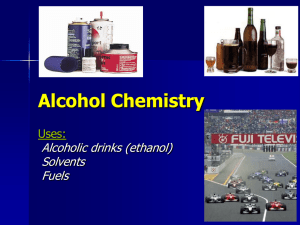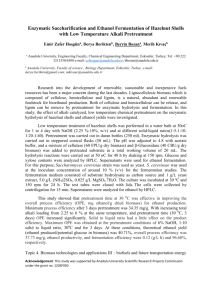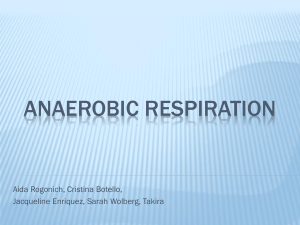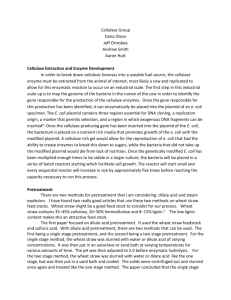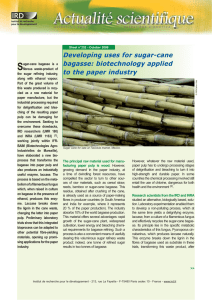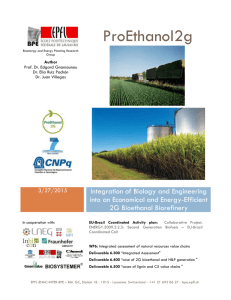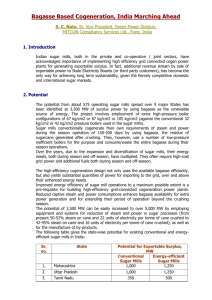In-silico - University of York
advertisement
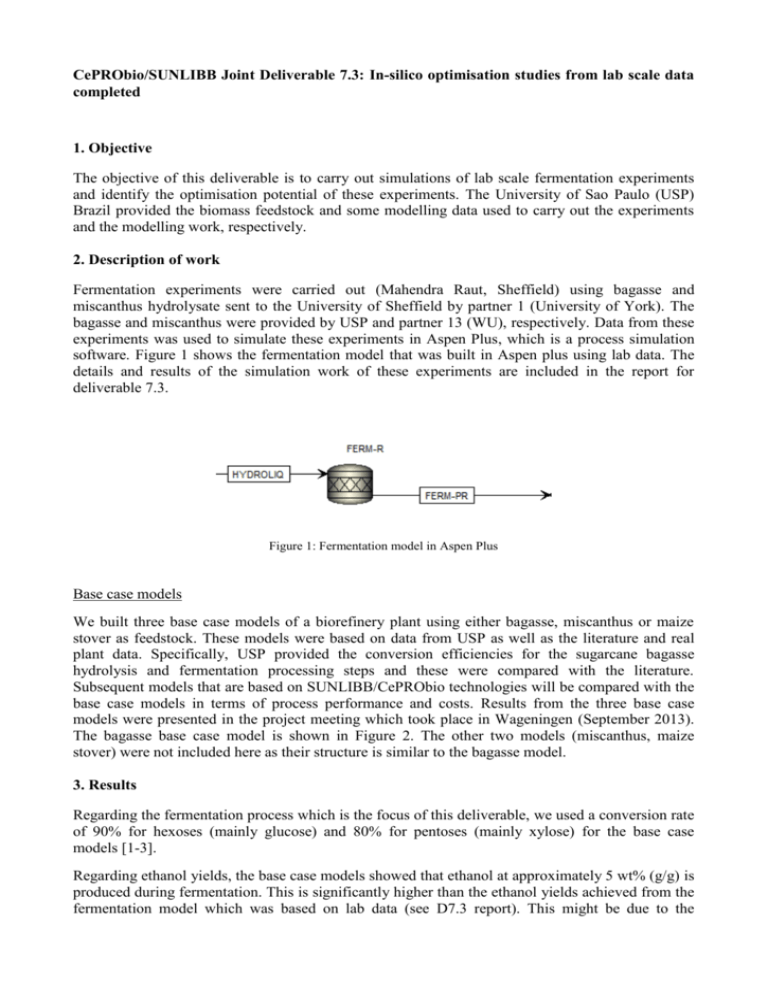
CePRObio/SUNLIBB Joint Deliverable 7.3: In-silico optimisation studies from lab scale data completed 1. Objective The objective of this deliverable is to carry out simulations of lab scale fermentation experiments and identify the optimisation potential of these experiments. The University of Sao Paulo (USP) Brazil provided the biomass feedstock and some modelling data used to carry out the experiments and the modelling work, respectively. 2. Description of work Fermentation experiments were carried out (Mahendra Raut, Sheffield) using bagasse and miscanthus hydrolysate sent to the University of Sheffield by partner 1 (University of York). The bagasse and miscanthus were provided by USP and partner 13 (WU), respectively. Data from these experiments was used to simulate these experiments in Aspen Plus, which is a process simulation software. Figure 1 shows the fermentation model that was built in Aspen plus using lab data. The details and results of the simulation work of these experiments are included in the report for deliverable 7.3. Figure 1: Fermentation model in Aspen Plus Base case models We built three base case models of a biorefinery plant using either bagasse, miscanthus or maize stover as feedstock. These models were based on data from USP as well as the literature and real plant data. Specifically, USP provided the conversion efficiencies for the sugarcane bagasse hydrolysis and fermentation processing steps and these were compared with the literature. Subsequent models that are based on SUNLIBB/CePRObio technologies will be compared with the base case models in terms of process performance and costs. Results from the three base case models were presented in the project meeting which took place in Wageningen (September 2013). The bagasse base case model is shown in Figure 2. The other two models (miscanthus, maize stover) were not included here as their structure is similar to the bagasse model. 3. Results Regarding the fermentation process which is the focus of this deliverable, we used a conversion rate of 90% for hexoses (mainly glucose) and 80% for pentoses (mainly xylose) for the base case models [1-3]. Regarding ethanol yields, the base case models showed that ethanol at approximately 5 wt% (g/g) is produced during fermentation. This is significantly higher than the ethanol yields achieved from the fermentation model which was based on lab data (see D7.3 report). This might be due to the relatively low sugar content in the hydrolysate and the low retention time (54 hours for bagasse and 120 hours for miscanthus) of the fermentation experiments. 4. Conclusions Aspen Plus simulations of fermentation experiments showed that Clostridium acetobutylicum has a lot of potential for fermenting sugars to ethanol. The models based on the lab experiments were compared with base case scenarios which were based on data from our Brazilian partner (USP) and the literature. The results showed that ethanol yields could be increased with higher retention times and by improving the upstream pretreatment process to result in higher sugar content in the biomass hydrolysate. Figure 2: Bagasse base case model in Aspen Plus 5. Future Work We will continue building Aspen Plus models based on technologies examined within the SUNLIBB and the CePRObio projects. We will also investigate the performance and costs of various scenarios (D7.7). 6. References 1. Humbird, D., et al., Process Design and Economics for Biochemical Conversion of Lignocellulosic Biomass to Ethanol. Report NREL/TP-5100-47764, National Renewable Energy Laboratory, May 2011. 2. 3. Piccolo, C. and F. Bezzo, A techno-economic comparison between two technologies for bioethanol production from lignocellulose. Biomass and Bioenergy, 2009. 33: p. 478-491. Osaki, M.R. and P. Seleghim, Multi-objective optimization of an industrial process of biomass conversion into energy vectors: a case study of sugarcane to ethanol and electricity. 2013 (Manuscript submitted to the Energy journal).

